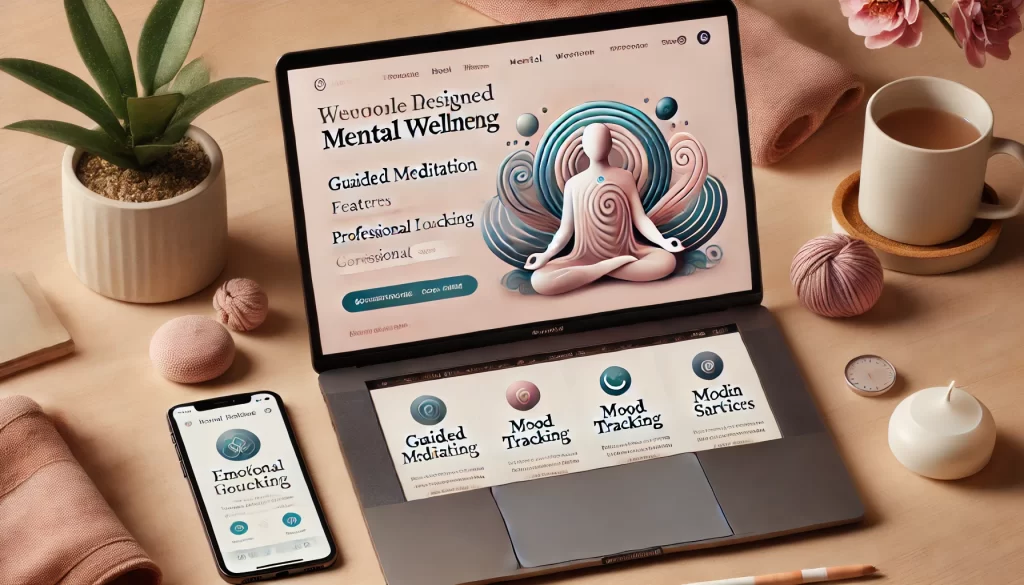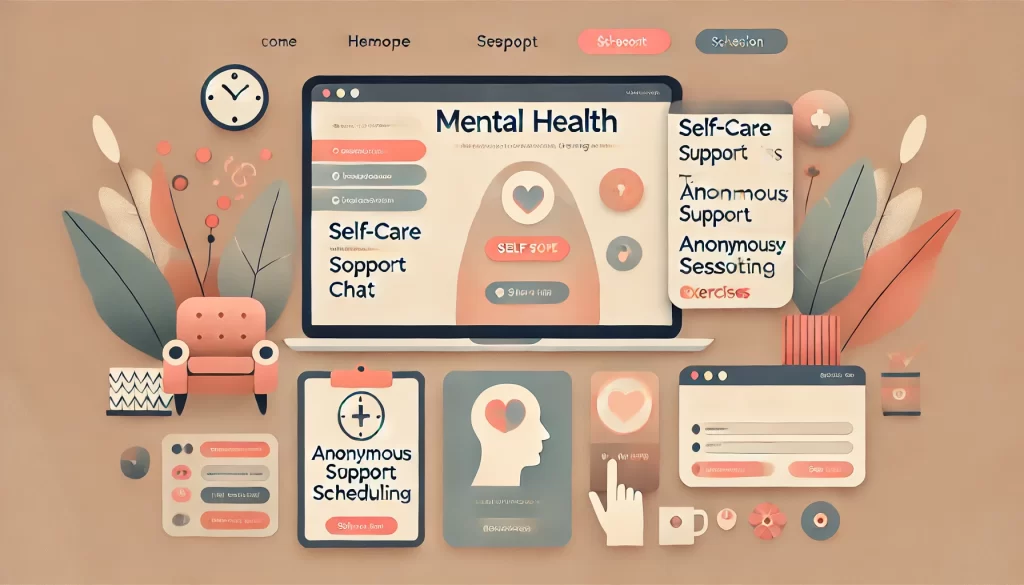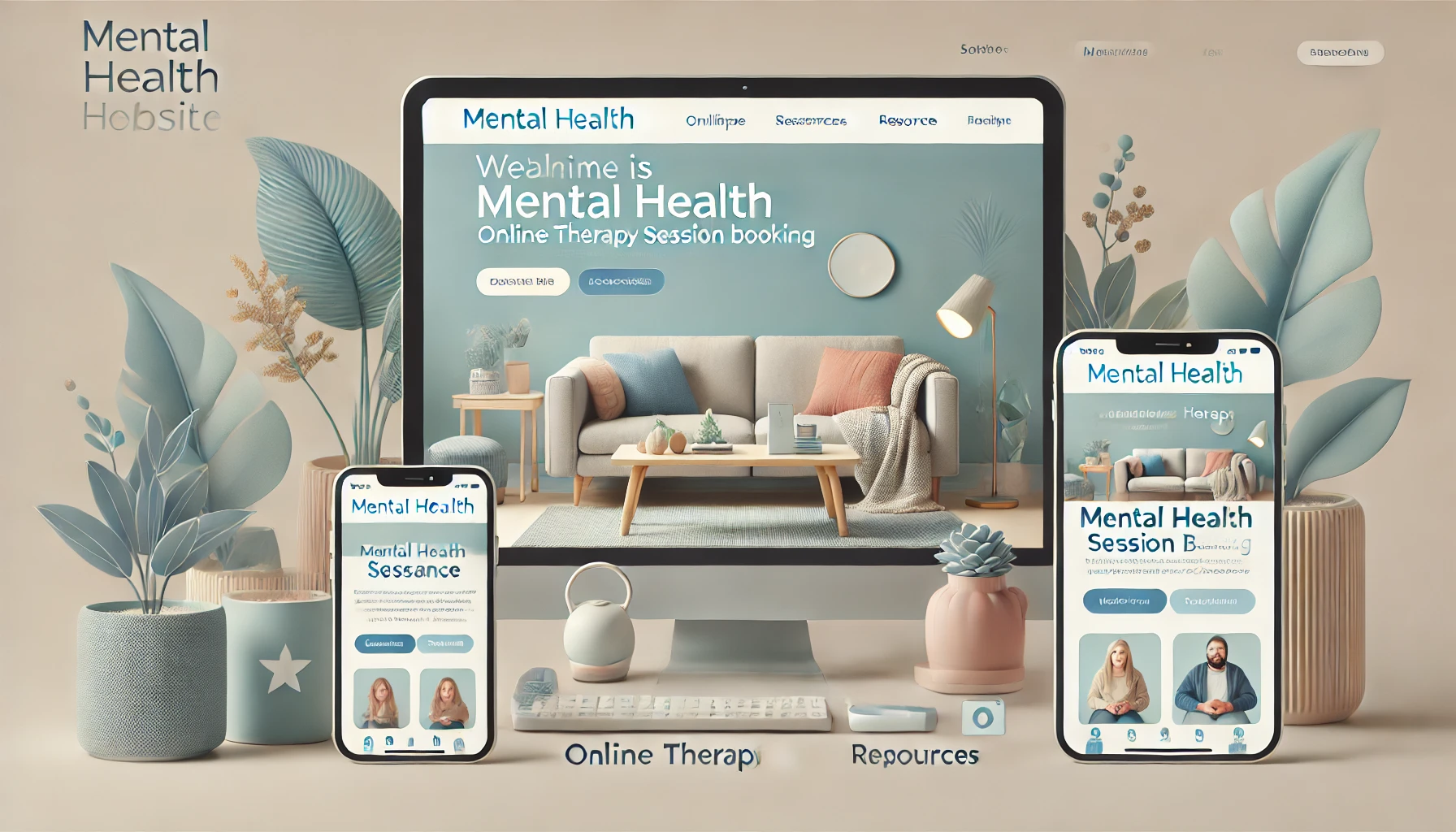Introduction
In today’s digital-first world, the role of a website for healthcare professionals cannot be overstated. For mental health professionals including therapists, counselors, and psychologists, your website is often the first point of contact for prospective clients. Therefore, the design and content of your site should do more than provide information; it should build trust, create a supportive environment, and encourage visitors to take action.
Designing a mental health website requires a delicate balance of empathy, professionalism, and accessibility. Whether you are offering therapy services, mental health resources, or wellness guidance, your website needs to reflect your expertise while catering to the emotional and psychological needs of your audience. This post will delve into the tailored design and content strategies that can make your mental health website not only functional but also a source of comfort and reliability for visitors.

Tailored Design and Content Strategies for Mental Health Professionals
The Importance of User-Centric Design
For mental health websites, the primary goal is to create a user experience that feels welcoming, safe, and easy to navigate. A clear, intuitive layout is key. Users visiting a therapy website are often experiencing stress, anxiety, or uncertainty, and they need a website that immediately puts them at ease.
Related Posts
- Alternative and Natural Health Websites
- Social Media Strategies for Holistic Health Websites
- Email Marketing for Healthcare Professionals
Key Elements of Mental Health Website Design
- Simple and Clean Layout: Overly complex or cluttered websites can overwhelm users, especially those seeking mental health support. A minimalist design with plenty of white space helps reduce anxiety and guides users toward the most important information.
- Calming Colors: The color palette of your website can significantly impact how users feel. Soft, calming colors like light blues, greens, or neutral tones are ideal for mental health websites. Avoid harsh, bright colors that might create a sense of urgency or discomfort.
- Mobile Optimization: Many users will visit your site from their mobile devices. Ensure that your website is fully responsive and easy to navigate on all screen sizes.
- Clear Navigation: Make it easy for visitors to find the information they need, whether it’s therapy services, contact details, or blog posts. Organize your content into logical categories and use clear labels.
Website Structure for Mental Health Professionals
A well-organized mental health website will typically include the following sections:
- Homepage: This is where first-time visitors form their initial impressions. Your homepage should feature a calming design, a clear statement of services, and an easy-to-find call to action.
- About Page: Introduce yourself as a mental health professional, including your qualifications, experience, and areas of expertise. Personalize the content to build trust and make visitors feel comfortable.
- Services Offered: This section should detail the different types of therapy or services you offer. Explain the process and what clients can expect during sessions. Consider offering a FAQ section to address common questions about therapy or counseling.
- Contact Page: Your contact page should be easily accessible, with a simple form for inquiries and information about scheduling appointments. Offering multiple ways to contact you (email, phone, online booking system) is also important.

Examples of Best Mental Health Website Designs
When designing your mental health website, it’s helpful to look at examples from the field that have mastered the balance of design, content, and user experience.
Simple, Trustworthy Layouts
An example of a strong mental health website design uses calming visuals, clear typography, and easy navigation. The best websites avoid heavy use of jargon and focus instead on language that is clear, warm, and inviting. A good example would be a site where a mental health professional’s bio and credentials are paired with patient testimonials, creating a feeling of trustworthiness and empathy.
Integration of Client-Centered Content
Some of the best mental health websites include blog sections or resources dedicated to topics like mental health tips, coping strategies, and self-care advice. These resources are valuable not only for SEO purposes but also to demonstrate the provider’s commitment to helping visitors outside of therapy sessions.
The Importance of Creating a Supportive, Trustworthy Environment
For mental health professionals, creating a trustworthy, supportive environment is crucial. Your website should act as an extension of your professional ethos, ensuring clients feel safe and heard even before their first appointment.
Building Trust through Content
One of the best ways to foster trust with website visitors is through content that offers real value. This content should be:
- Educational: Share information about mental health, therapy, and self-care practices. Educational resources can empower visitors by helping them understand mental health conditions, therapy methods, and wellness techniques.
- Empathetic: Use language that is gentle, supportive, and understanding. A person seeking therapy is often dealing with vulnerabilities, so make sure your content reflects empathy and sensitivity.
- Action-Oriented: Provide clear, actionable steps for visitors. Whether it’s booking an appointment, accessing resources, or reading more about a particular therapy technique, guide users in a way that feels natural and empowering.
Related Posts
- Healthcare Website Design Essentials & Best Practices
- Digital Marketing Strategies for Healthcare Websites
- Key Elements of Effective Healthcare Websites
Creating an Accessible Mental Health Space Online
Mental health challenges affect individuals in unique ways, so your website should be designed to meet the needs of diverse visitors. Here are some key considerations for accessibility:
- Text-to-Speech Functionality: Some visitors may have visual impairments or other disabilities. Offering text-to-speech functionality can help ensure your website is accessible to everyone.
- Easy-to-understand Language: Avoid using clinical jargon that may confuse or intimidate visitors. Speak to your audience in a way that is straightforward, compassionate, and accessible.
- Privacy and Confidentiality: Ensure your visitors know that their information will be kept private. For therapy websites, this includes clearly stating your privacy policies and outlining how data is handled.
FAQs
What should be included in a mental health website?
A mental health website should include key sections such as an introduction to the therapist, an overview of services offered, a contact page, patient resources, and educational content related to mental health.
How can I make my therapy website more trustworthy?
To make your therapy website more trustworthy, use clear and empathetic language, include client testimonials, provide detailed information about your credentials and services, and ensure that the website is easy to navigate.
Why is design important for mental health websites?
The design of a mental health website is essential because it directly affects how visitors feel. A calming, easy-to-navigate site helps reduce stress, provides a sense of safety, and encourages users to trust the services being offered.
What are the best colors for a mental health website?
Soft, calming colors like light blues, greens, and neutral tones work best for mental health websites. These colors evoke a sense of peace and trust, which is essential in creating a welcoming online space for visitors.
Key Takeaways
Designing a mental health website requires thoughtful consideration of both the user experience and the emotional needs of your audience. From creating an intuitive, user-friendly design to offering personalized content and resources, every element of your site should be geared toward fostering trust and providing value. By following best practices and focusing on empathy and accessibility, you can create a digital space that not only supports your business but also helps those in need of mental health support.
- A simple, clean design with calming colors can reduce stress and increase engagement on mental health websites.
- Tailored content strategies that provide value, such as educational resources and client testimonials, help build trust.
- Accessibility features, like text-to-speech options and clear language, ensure your website is welcoming to a wider audience.
- Creating a supportive online environment can make visitors feel safe and confident in seeking therapy or mental health services.
